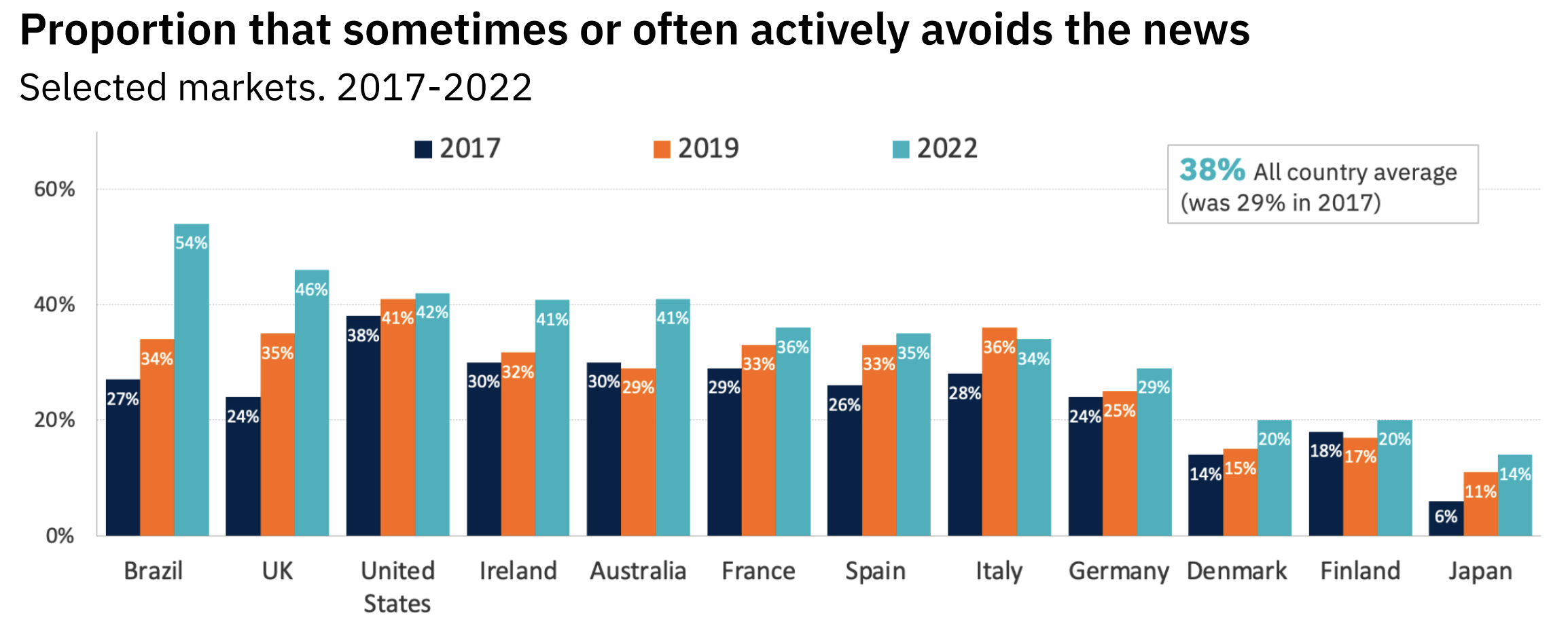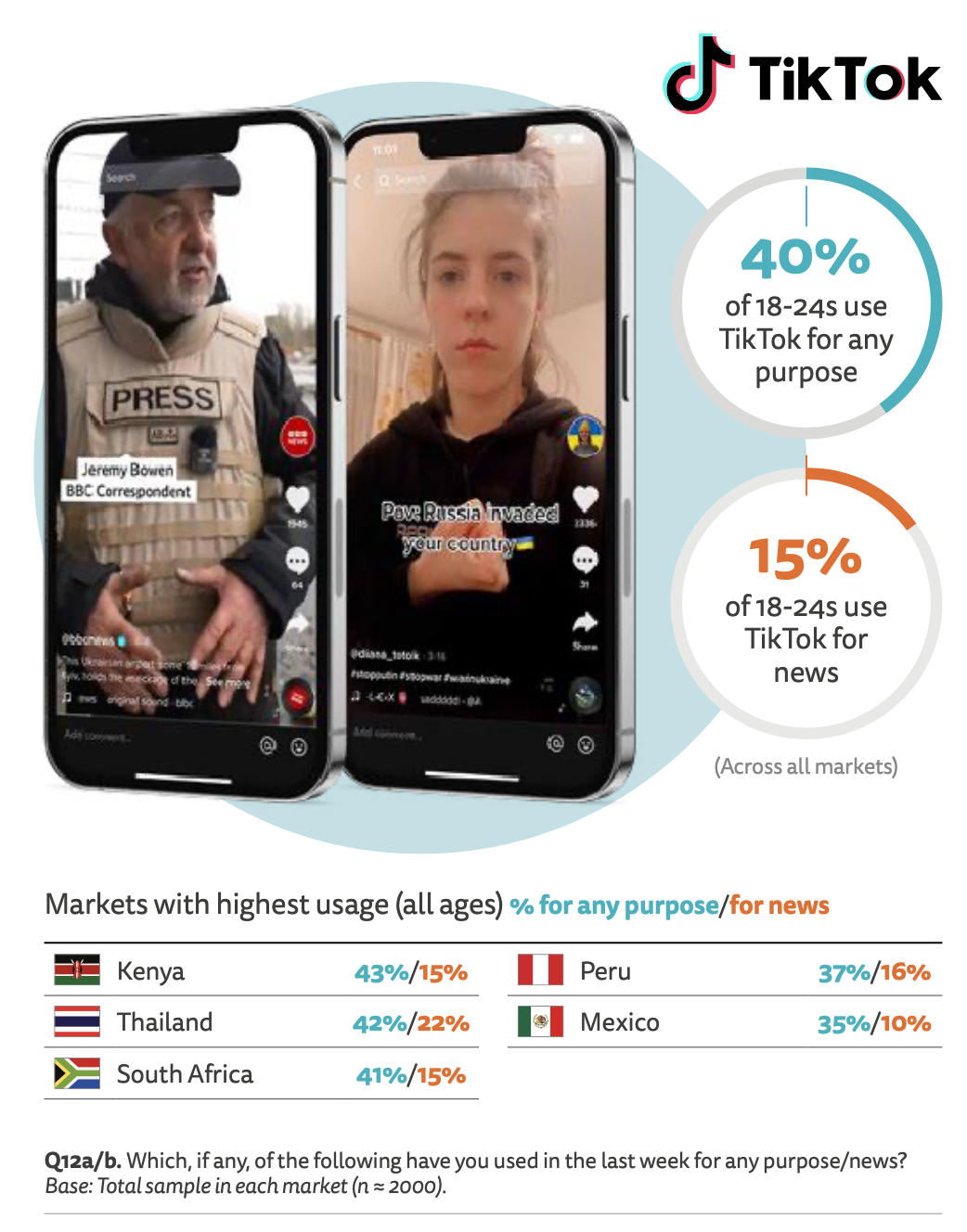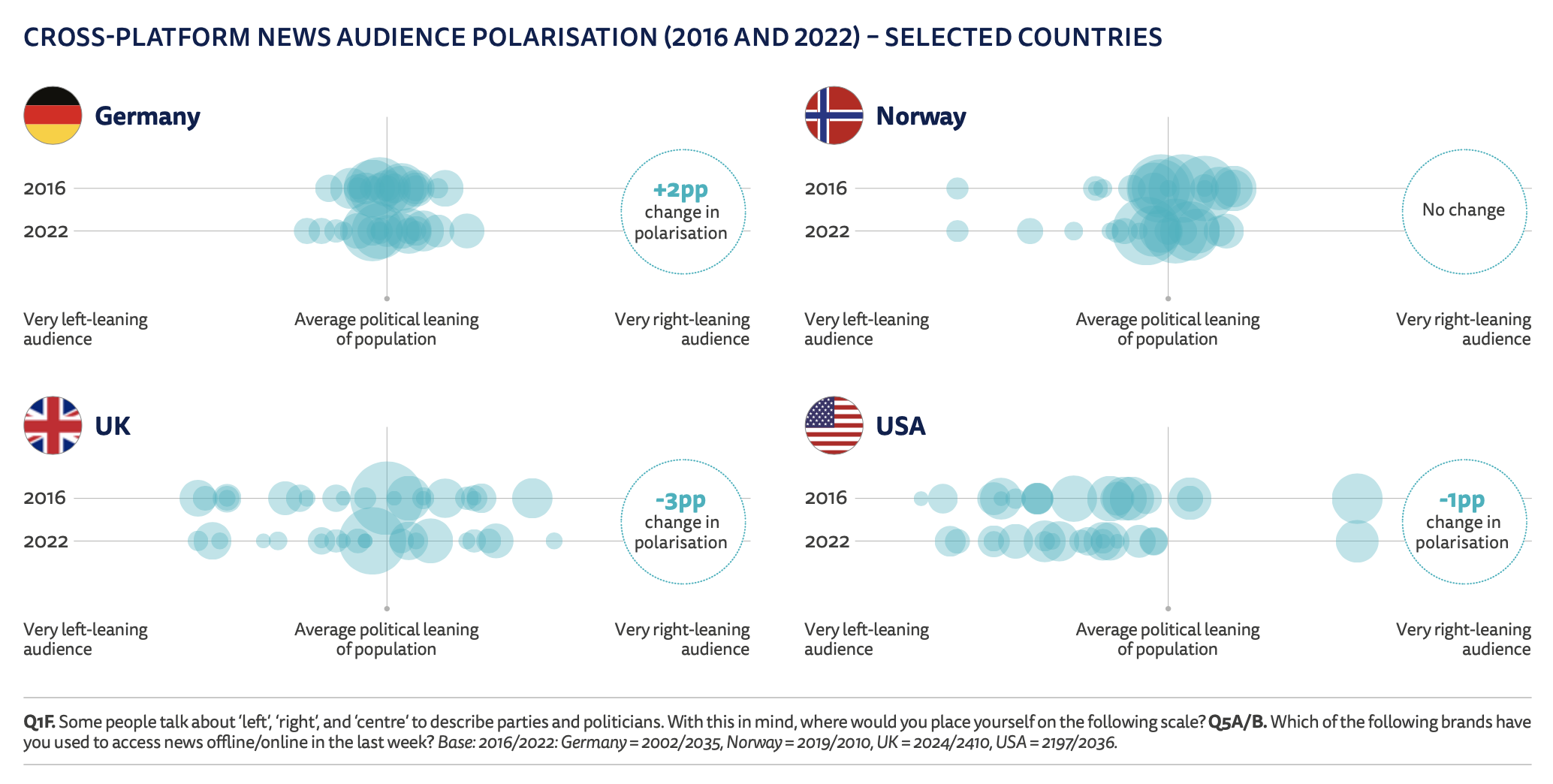
The pandemic brought a bump in news consumption that now seems to be fading away, Oxford’s Reuters Institute for the Study of Journalism (RISJ) found in its 2022 Digital News Report, out this week. RISJ surveyed more than 90,000 people in 46 countries about their digital news consumption, and found evidence of a potential “leveling off” in the numbers of people who will pay for online news.
RISJ has released an annual digital news report every year since 2012. The research is based on online surveys conducted in January and February of this year; the researchers also conducted focus groups and interviews in the U.S., U.K., and Brazil.
The topline findings of this year’s report echo last year’s: People in wealthy countries are paying for news, but that trend is leveling off. “Across a basket of 20 countries where payment is relatively widespread, 17% paid for any online news — the same figure as last year,” the authors note.People are also increasingly avoiding news. “The proportion that says they avoid the news, sometimes or often, has doubled in Brazil (54%) and the U.K. (46%) since 2017 — and also increased in all other markets,” the authors write. In the U.S., the increase is smaller: 42% of U.S. respondents said that they “sometimes or often actively avoid the news” in 2022, up from 38% in 2017.
In the United States, those who self-identify on the right are far more likely to avoid news because they think it is untrustworthy or biased, but those on the left are more likely to feel overwhelmed, carry feelings of powerlessness, or worry that the news might create arguments.

Some people are just reading no news at all. “We find that many people are becoming increasingly disconnected from news,” the authors write:
We now have solid data spanning 10 years that enable us to see consistent and relentless falls across countries in the reach of traditional channels such as print, radio, and television news. At the same time, we find that online reach is flat or, at best, increasing slightly — but certainly not making up the gap.
Each year between 2013 and 2022, for instance, RISJ asked U.S. respondents to note which news sources they’d used in the last week. The percentage of respondents who said they’d used none of the listed options grew from 3% in 2013 to 15% this year.

“While the United States seems to have the largest group of disconnected news users, we see similarly high figures in Japan (15%), the United Kingdom (9%), France (8%), and Australia (8%),” the authors note.
Here are a few more interesting bits from the report; next week, we’ll publish a follow-up by one of the report’s authors, Kirsten Eddy, delving further into new findings about the way young people consume news.
In the U.S., 19% of people pay for online news content, RISJ found. (That’s down a bit from 21% last year.)
The average age of a digital news subscriber, across all the countries the researchers looked at, is 47.
While most people who do pay for online news pay for just one subscription, 56% of online news subscribers in the U.S. now pay for two or more online news subscriptions.
“We find significant and rapidly growing usage of TikTok,” the authors write, though it’s still used by a minority of respondents for any purpose — 16% of respondents across 12 countries used TikTok in 2022. Facebook remains the social network where most people get news, though that’s down 12 percentage points from 2016.

In North America, 34% of respondents said they’d used Facebook to get news in the past week; 6% had used TikTok to get news.
“TikTok is a news source I end up consuming because I’m also often scrolling TikTok for other reasons, but the algorithm ends up providing news anyways,'” a 22-year-old American woman said.
People under 25 are TikTok’s primary users.

The Substack phenomenon — individual journalists striking out on their own and charging for newsletters — is still tiny and mainly limited to the U.S. “We find that just 7% of news subscribers in the United States pay for one or more journalist emails — around 1% of our overall sample,” the authors write.

Email news generally “is valued mainly by older, richer, and more educated news consumers, most of whom are already deeply invested in news,” the authors note, and “more than 80% of all those in the United States who use email for news are 35 or older.”
The Substack-type email newsletters by individual journalists, though, make up a significant proportion of the newsletters that younger people read. “Younger respondents in the U.S. were … much more likely to be receiving emails from individual journalists operating on their own than older respondents,” the authors write.

Before we get into this, it’s good to explain the process a bit: RISJ maps news outlets’ online audiences to see whether and how much they skew left or right, politically, from the population average, then plots them. This is best illustrated with an example — here’s the U.K. this year:

Some newspaper outlets like the Guardian have a more left-leaning audience compared to the national population, whereas others — like the Daily Mail — have an audience that skews right. The largest bubble on the map, which represents the audience for BBC News, is much closer to the mid-point, indicating a mixed and/or centrist audience that closely resembles the political make-up of the UK as a whole.
You can see how the U.S., “where there is no large outlet in the middle of the map,” has higher news audience polarization than the U.K. The authors note this highlights “the importance of public service media as a central anchor in much of Europe (though local news media, which we do not plot here, may partly fulfill this role in the USA).”

While there are differences by country, the researchers find that at least in the U.S., U.K., Norway, and Germany, “polarization has not increased substantially — if at all — in the last six years. The most striking aspect of the maps is how little they have changed over time…the emergence of partisan digital-born brands has minimal effect due to the small sizes of their audience.”

You can read the full report here.